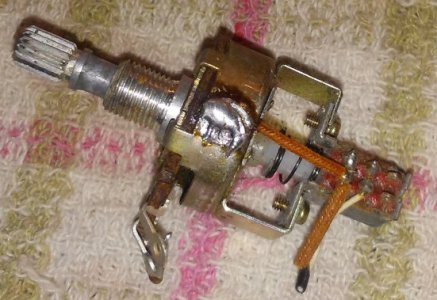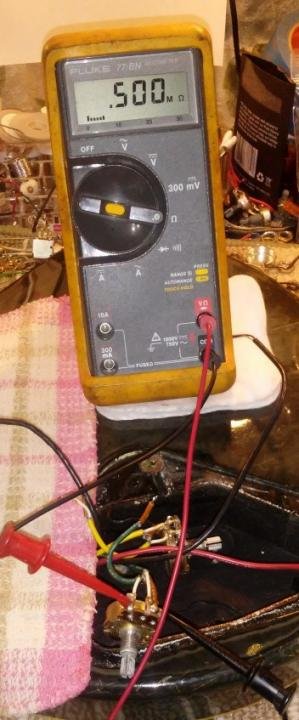What you're saying is that the tone CAP makes a difference, even when the pot is on 10. I agree, especially if you're using a .044uf cap. And it would have been beneficial in my op if I had said that I normally use 500-550k pots with .010uf caps. My bad. That would have been very important info to include.
Your admission that even with a .044uf cap "it is subtle", means that you are looking/listening for it in a controlled environment. Not AT ALL what I said. You think you can still hear that "subtle" difference when you're gigging with a band? That was my point in my op. Didn't I say..."For all practical purposes (meaning what you hear when you are giging)"?
Are you serious? You think I install tone bypass switches to switch between tone on 10 and tone out of circuit? Dude!! Seriously?!!! What's wrong with you? You're criticising ME for YOUR mental deficiencies? ItsaBass got it spot on in his post #13. You can either reread his post or you can be lazy and ask me to explain it to you in detail. (which I won't because it has already been explained and because it is too obvious, but you can ask me anyway).
I was speaking in generalities.....very accurate generalities by the way. But if you are an exception, more power to you. I'll invite you to come over to tell me when my neighbor's cat farts three doors down during rush-hour traffic.
As far as you being unable to understand my metafore, all that means is that you have a deficiency in your abstract reasoning ability, it doesn't mean you don't have a very acute hearing.
Thank goodness you didn't say it was an original Gibson '59 LP Standard. But point made, anyway. (You only drive a Tesla).
If I remember correctly, you have made some good contributions to the forum. Why are you trying so hard to destroy your credibility?
Wow! OK.
In reverse order: I get annoyed when someone tells me that someone tells me something doesn't matter when it does matter to me. I'm not sure I have any credibility to burn? I do, after all, play a Marauder!
I do not drive a Tesla or any other high-end car. I am the most "make do", "i bet I can duplicate that myself for ten bucks" low-buck mother@#$%&* on the planet. I bought the Marauder in pieces from a guitar show where it was literally laying on the cement floor under the dealer's table. If I had a no-load pot back then I would have used one but I had a toggle switch so I used that.
My abstract reasoning is fine, but your analogy (Mercedes = no-load pot) is so-so. If you were writing about people buying super-expensive "magic mojo" handmade pots, maybe? But a no-load pots actually do something a regular pot doesn't do, especially if it has the detent.
I cannot hear cat farts but my hearing is sensitive to high frequencies. What some people hear as "sparkly" I hear as harsh or trebly. And I CAN hear that difference (tone pot at 10 vs switched out of the circuit) at stage volume in a band setting. Probably because of the volume? I play extremely quiet at home and everything sounds softer and warmer. It's when I get on stage that I really notice differences between pickups, guitars, strings, cables, etc. Probably no one in the audience hears it but I do and it matters to me. More than one guitar I thought I liked got resold after I played a show with it. That is also how I figured out I don't like what buffers do to my tone. (On stage, I mean.)
It may very well be the cap that matters more. But if my $150 Marauder WAS a '59 Burst LP I damn sure would have put in a no-load pot rather than drilling a hole in the guitar to install a toggle!
I assumed you put the switch in to toggle between 10 and "out" because that is why I installed mine. When I first installed the toggle the guitar had a 250 or 300k tone pot. I didn't know it at the time, I just knew it sounded dull, which seemed odd for a guitar with a maple neck. So I wired in the toggle, which made a BIG difference. A few years later I replaced the tone pot with a 500k pot and the difference between in & out got a lot smaller. But it is still there. Clean I prefer it switched out, but with gain, in band rehearsal or on stage, it puts out some frequencies that bother my ears so I leave it switched in but on 10.
But none of that really matters, because what I should have typed in the first place is this: If it makes someone happy to run a no-load tone pot then more power to them. It's a lot cheaper than buying another pickup or guitar or overdrive or speaker or amp! But I am not going to tell them that they cannot hear the difference if they say they can, because I can. And if they can't hear it, that's fine too.


